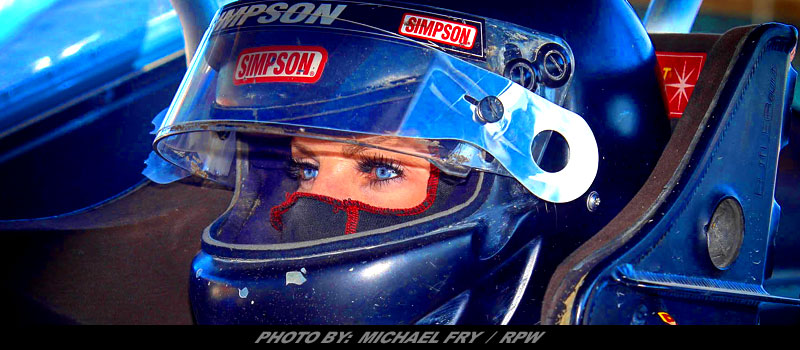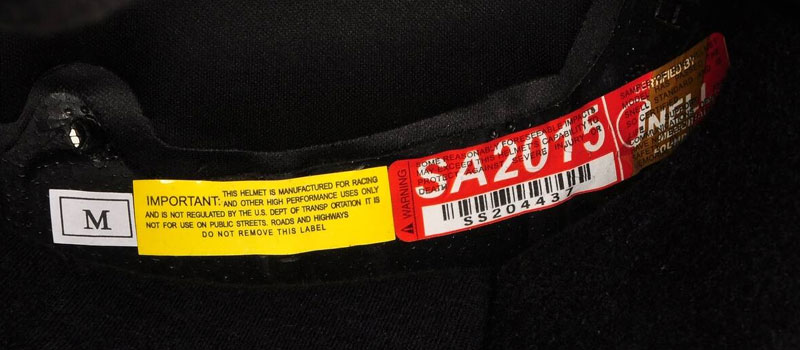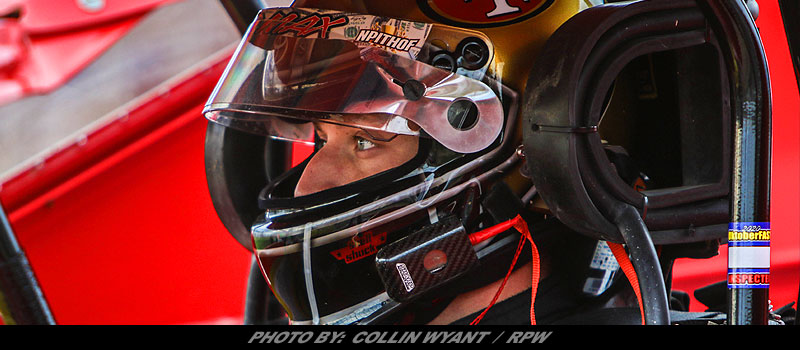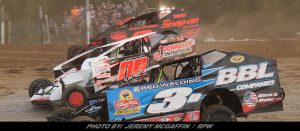RPW Column: Choosing The Right Helmet Isn’t Just About Looking Cool; Understanding Its Rating

 RPW Column By: BRETT HORLACHER / RPW – CLIFTON PARK, NY – Most of the time, a racer doesn’t think twice about putting his or her helmet on. However, there’s a lot more to that helmet than just fiberglass, plastic and padding.
RPW Column By: BRETT HORLACHER / RPW – CLIFTON PARK, NY – Most of the time, a racer doesn’t think twice about putting his or her helmet on. However, there’s a lot more to that helmet than just fiberglass, plastic and padding.
Each helmet is designed to meet or exceed ever increasing safety standards, and for good reason. If we aren’t working toward making the sport safer, why are we even putting a helmet on in the first place?
The current rule book (as of early December 2020) for DIRTcar Northeast has the following guidelines for helmet design and condition for the Big Block, 358’s, Sportsman as well as Pro Stocks:
“Full face with minimum safety rating of FIA 8860-2010, FIA 8860-2018, Snell SA 2015, Snell SA 2010, Snell SAH 2010 and/or valid SFI 31.1/2005 label.
All of these numbers and ratings amount to one thing…your helmet is one of many built after their designers sent off design prototypes for testing and evaluation.
Many manufacturers submit those designs to multiple certifying agencies. Unfortunately the names and numbers associated with those reviews aren’t entirely straight forward. Here, we’ll walk through the different ratings, including the source of the different certifications.
 To be succinct, each different rating organizations conducts tests in a similar manner. In synopsis, they must submit their completed helmets for evaluation and testing. The tests include:
To be succinct, each different rating organizations conducts tests in a similar manner. In synopsis, they must submit their completed helmets for evaluation and testing. The tests include:
- Impact resistance at hot and cold temperatures from different directions
- Chin bar impact testing
- Shell and face shield penetration testing
- Frontal head restraint testing
- Flame resistance
- The ability to be removed in the event a victim is unconscious
The ‘Snell’ rating is an evaluation and certification given by the Snell Foundation. They are a not-for-profit organization dedicated to research, education, testing and development of helmet safety standards.
Since its founding in 1957, Snell has been a leader in helmet safety in the United States and around the world. The current Snell SA (Special Applications) 2020 standards are those by which all new helmets are manufactured to meet, or hopefully, exceed.
In regards to the recent change, some might ask, what is the difference between SA2020 and SA2015? While the differences in ratings aren’t as great as the changes made between 2010 and 2015, they are another step in the right direction. Those changes included mandatory head restraint system compliance, among other things. This time around, improvements included for impact resistance and increased testing of the final product.
The FIA rating source is the Federation Internationale de l’Automobile (FIA; English International Automobile Federation)…an association founded in 1904. Their initial aim was to bring coherent governance and safety to motorsport. Their current role is to be a central governing body for multiple motor sport disciplines.
 They also want to ensure that fair, capably-regulated, and, above all, safe events are conducted in all corners of the globe.
They also want to ensure that fair, capably-regulated, and, above all, safe events are conducted in all corners of the globe.
Current FIA certification standard (FIA 8860-2018) is a certification that is given to helmets that undergo similar rigorous testing to the Snell SA Standard, as was mentioned earlier. The FIA 8860-2018 standard was introduced in June of 2018 with implementation during the 2019 race season.
The SFI rating source is the SFI Foundation. They are a non-profit organization established to issue and administer standards for the quality assurance of special performance and racing equipment.
SFI has served the automotive aftermarket and the motorsports industry since 1978. They’ve established industry standard specification lists, which promote quality and reliability in the design, manufacture and application of products of the special parts industry. Those lists provide both the seller and buyer information to make informed decisions.
The SFI Spec number for Helmets is 31.1, and the testing outlined for SFI certification is also like the methods mentioned in this article.
Each helmet design and manufacture date is tied to a certain set of performance specifications. This, unfortunately, means that when your helmet ‘ages-out’ of a specific rating. It cannot be re-certified and must be retired to the shelf.
While that old helmet looks cool, lets keep it at the shop. If your helmet is out-of-date, strap the latest and greatest that fits your budget on your head so we can keep on living our dreams, one lap, and one restart, at a time.
Stay Safe, Drive Fast, Take Chances…Until next time everyone…
– Brett







